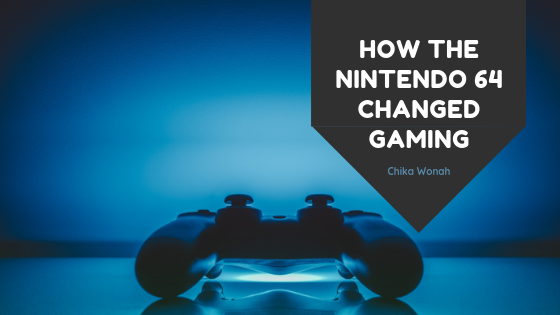The Nintendo 64 was released in 1996 and immediately changed the world of gaming. The classic three-pronged controller has become a symbol of both the quirks and successes of the modern gaming market.
Nintendo’s First 3D Console
The N64’s precursor, the Super Nintendo Entertainment System, played two-dimensional games with 16-bit graphics. A few 3D games were available on this system, playable using the Super FX chip that could be purchased separately. These games were revolutionary, clunky, and barely 3D by today’s graphics standards.
When the N64 was released and players could freely wander the world of Mario 64, it became clear that gaming was headed in a new direction. Even Mario 64’s classic opening screen, which included a stretchable 3D model of Mario’s face, represented an advent of technology.
Controller Sensitivity
The N64 controller had responsive buttons and a surprisingly sensitive analog stick. Although many gamers remember the controller for its strange shape, this device introduced the ability to walk, run, or sprint depending on the strength of player input. This small feature has become integral to most modern adventure games, although running is still the default mode for many players.
Split-Screen Multiplayer
Multiplayer has been a part of Nintendo’s identity since the very beginning when Mario and Luigi took turns in Super Maro Bros. But the N64 introduced an entirely new feature that would change gaming forever: split-screen multiplayer.
Suddenly, multiplayer racing games and first-person shooters were extremely viable. Goldeneye, Mario Kart 64, and countless other multiplayer titles flooded the market. Without the N64, the world might have never seen four people playing the same game.
An Introduction to Open-World Adventures
The N64 didn’t invent the open-world adventure, but it definitely popularized the genre. Of particular note is the famous Legend of Zelda: Ocarina of Time. This enticing three-dimensional fantasy captivated audiences and inspired nearly every modern adventure title in existence. The game was so popular that Nintendo has re-released it on several different consoles, including the GameCube and the Nintendo 3DS.
The N64 wasn’t Nintendo’s best or most popular system, but it represented a shift in gaming philosophy. This influential console helped popularize the storyline-driven, graphics-intensive gaming model that is still in use by most game developers to this day.

